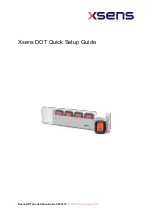
Working Area Requirements
Gas Requirements
Thermo Scientific
iCE 3000 Series Pre-Installation Requirements Guide (P/N 9499 500 30031, Version 1.6)
5-7
Gas Requirements
The spectrometer uses a flame or furnace to provide atoms that are
analyzed to indicate the concentration of an element in an unknown
sample. A flame will use acetylene as the fuel, and either air or nitrous
oxide will be required as the oxidant for the flame. A nitrous oxide flame
will also require air to allow the system to stabilize before a nitrous oxide
flame is used.
Care should be taken to ensure that laboratory gas lines are gas-tight,
free from oil and grease, and do not contaminate the gases used for the
spectrometer.
Gas tanks must be stored and operated in a vertical position and in an
environment free from naked lights and sparks. The tanks should be left
to stabilize overnight before use.
Only the gas tubing supplied with the spectrometer should be used. The
gas tubing supplied will terminate in 3/8 in. BSP thread connections.
All gas supplies should be regulated and connected within 1 m of the
instrument.
A comprehensive Risk Assessment must be performed that is specific to
the gas requirements.
CETAC
ASX-260
330 mm
(13 in)
508 mm
(20 in)
610 mm
(24 in)
8.4 kg
(18.5 lbs)
CETAC
ASX-520
520 mm
(20.5 in)
482 mm
(19 in)
610 mm
(24 in)
10.5 kg
(23 lbs)
Table 5-4.
Accessory dimensions and weights, continued
Accessory
Width
Depth
Height
Weight
WARNING
Explosive Components.
Risk of injuries. Acetylene and nitrous oxide
in combination with oxygen are highly flammable and can form
explosive compounds. If the gas lines are not appropriate or leak, the
gas can escape unchecked and can cause explosion of the gas line. Be
sure the gas lines are appropriate. Regularly check for leaks.
Turn off the flame before maintenance or adjustment works on the gas
supply system. Steady flow rates at the required pressures (as described
in the following) are important for flame safety.
















































